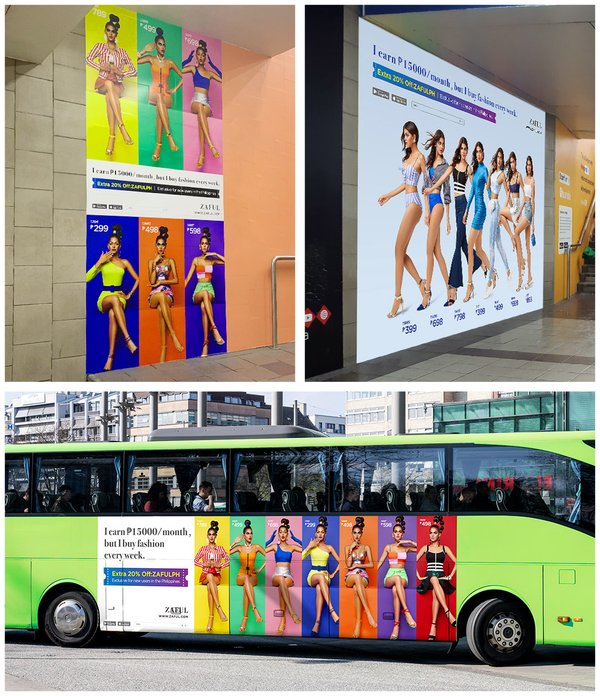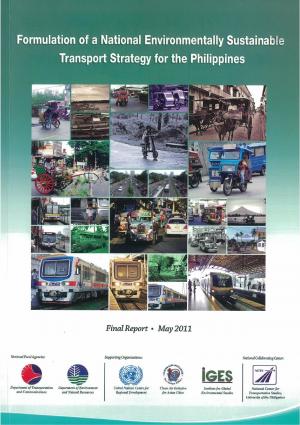Transit Advertising Philippines: Get To Countless Commuters Daily
Comprehending the Role of Transportation Advertising in Enhancing Brand Name Presence and Consumer Engagement
Transit marketing has actually emerged as a pivotal aspect in the advertising landscape, offering special opportunities for brand names to elevate their presence and involve consumers efficiently. With the ability to reach a diverse and restricted target market throughout their daily commutes, these advertising methods are not just regarding visibility; they have to do with producing meaningful links with possible clients. As we check out the complex benefits and cutting-edge methods within transit marketing, it comes to be vital to consider exactly how these aspects collectively influence customer understanding and actions, questioning concerning their long-term effect on brand loyalty.
Interpretation of Transit Advertising
Transit advertising describes the practice of advertising items, solutions, or brands with promotions put in and around public transport systems. This form of advertising and marketing includes a variety of positionings, consisting of posters on trains and buses, digital screens at transit stations, and wraps on the outside of cars. It intends to get to a diverse target market, profiting from the high foot traffic connected with public transportation.
Transportation advertising and marketing is tactically placed to record the focus of travelers, who frequently spend significant time waiting or taking a trip. By incorporating ads right into the day-to-day regimens of people, brands can develop a long-term impact and foster brand acknowledgment. The tool is specifically efficient in metropolitan environments, where public transportation is a key setting of traveling.
Furthermore, transit marketing can promote localized targeting, enabling organizations to reach details demographics based on transit courses and station locations. As metropolitan populations grow and the use of public transport boosts, this advertising technique has actually gotten prestige as a vital element of integrated advertising methods. The dynamic nature of transit marketing, combined with its capability to engage customers in a captive atmosphere, highlights its value in contemporary advertising practices.
Benefits of Transit Advertising And Marketing
The performance of transit advertising lies in its ability to provide a plethora of advantages to brands looking for to boost exposure and involvement. One of the key benefits is the extensive reach it offers; transit ads can effectively target varied demographics throughout metropolitan locations, getting to both pedestrians and commuters alike. This broad exposure substantially improves brand awareness.
One more benefit is the high regularity of perceptions. As transportation lorries follow established paths and stop at several places, they develop repetitive exposure that strengthens brand messages. This regularity fosters familiarity, which is important in consumer decision-making.
Transportation advertising is additionally cost-efficient compared to various other media platforms. Given its extensive reach and possibility for high impressions, brand names typically experience a lower price per thousand impressions (CPM), maximizing their marketing budget.
Additionally, transit advertisements can produce a feeling of community connection. By straightening with neighborhood transportation systems, brand names can resonate with local target markets and foster a feeling of regional pride. This localized approach improves brand loyalty and involvement, making transit advertising an engaging option for companies aiming to solidify their existence out there.

Effective Strategies for Transit Projects
To optimize the effect of transit campaigns, brand names must take advantage of critical planning and execution tailored to their target audience. First, determining the group qualities of the audience utilizing public transportation is important. This allows brand names to produce individualized messaging that resonates with potential consumers.
Following, picking the ideal transit mediums is vital. Whether utilizing bus wraps, subway posters, or digital displays, each medium has unique benefits that can enhance visibility. For circumstances, lively visuals on bus covers can attract focus, while digital advertisements can be updated often to mirror prompt promotions.
Additionally, integrating a cohesive branding approach across transit Look At This platforms ensures uniformity and strengthens the brand's identity. Utilizing attractive layouts and memorable taglines will reinforce brand find out recall amongst commuters.
Lastly, timing is a crucial element in carrying out successful transit projects. Introducing projects during optimal traveling hours or local events can substantially raise presence and involvement. By utilizing these strategies, brands can effectively harness the capacity of transportation marketing, promoting higher awareness and link with their target audience. Inevitably, a well-executed transit campaign can drive substantial development in brand exposure and customer involvement.

Determining Influence and Interaction
In examining the performance of transit marketing campaign, accurate measurement of influence and engagement is vital for brand names looking for to maximize their advertising and marketing strategies. Metrics such as reach, frequency, and impressions offer fundamental data to analyze exposure. Evaluating these elements aids figure out the number of prospective clients are subjected to the ads throughout their daily commutes.
Interaction can be more determined with consumer communications, such as web site traffic, social networks states, and direct actions to calls-to-action included in the advertisements. Making use of devices like QR codes or unique Links can promote tracking of customer actions straight connected to transit projects. Surveys and feedback devices likewise work as valuable approaches to collect qualitative data on customer perceptions and recall of the advertisement.
In addition, advanced analytics and acknowledgment versions can correlate transportation direct exposure with subsequent investing in behavior, using insights into the roi. By using a comprehensive approach that integrates quantitative and qualitative measures, brands can create a nuanced understanding of their transit advertising and marketing effect. Inevitably, this data-driven technique allows brand names to improve their projects, guaranteeing they resonate effectively with target audiences and improve total brand name look at more info exposure.
Case Research Studies of Effective Campaigns
Successful transit marketing campaign function as compelling instances of exactly how efficient techniques can boost brand presence and engagement. Transit Advertising Philippines. One significant situation is the "I Love New York" project, which changed the city's image and brought in millions of vacationers. By using train ads, signboards, and bus covers, the campaign created a solid, cohesive brand name identity, causing a considerable uptick in tourist and local company patronage
One more exemplary project is Coca-Cola's "Share a Coke" effort, which leveraged transit marketing to individualize the brand experience. By featuring prominent names on marketing products throughout numerous transit platforms, Coca-Cola fostered a deeper psychological connection with customers, motivating them to share their experiences on social media sites.
Furthermore, the "Got Milk?" campaign successfully used public transportation advertisements to reach a wide audience, reinforcing the message of the importance of milk in a well balanced diet plan. The campaign saw a measurable increase in milk consumption in target demographics.
These study highlight that when carried out thoughtfully, transportation advertising can considerably enhance brand presence, foster consumer involvement, and drive measurable results, showing its vital duty in modern-day advertising and marketing methods. - Transit Advertising Philippines
Verdict
Finally, transit advertising and marketing acts as a vital tool for improving brand name exposure and cultivating consumer interaction. By utilizing strategically positioned promotions within public transport systems, brands can successfully get to varied target markets and strengthen acknowledgment via consistent direct exposure. The application of targeted messaging and innovative strategies better enhances the influence of transit campaigns. Eventually, the capacity to gauge involvement and evaluate successful instance studies highlights the efficiency of transportation advertising in driving brand name loyalty and customer interactions.
Transit advertising has actually emerged as a crucial aspect in the advertising landscape, providing unique chances for brand names to raise their visibility and involve customers efficiently.Furthermore, transportation advertising can assist in local targeting, enabling organizations to get to certain demographics based on transit courses and terminal places.In examining the efficiency of transit advertising projects, exact measurement of impact and engagement is essential for brand names looking for to optimize their advertising methods.Successful transportation advertising and marketing projects offer as compelling instances of just how reliable methods can boost brand visibility and involvement.In conclusion, transit marketing offers as an important tool for boosting brand name exposure and fostering customer involvement.